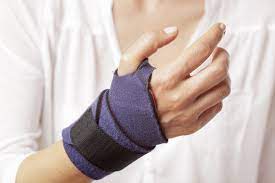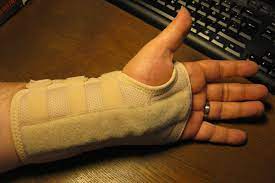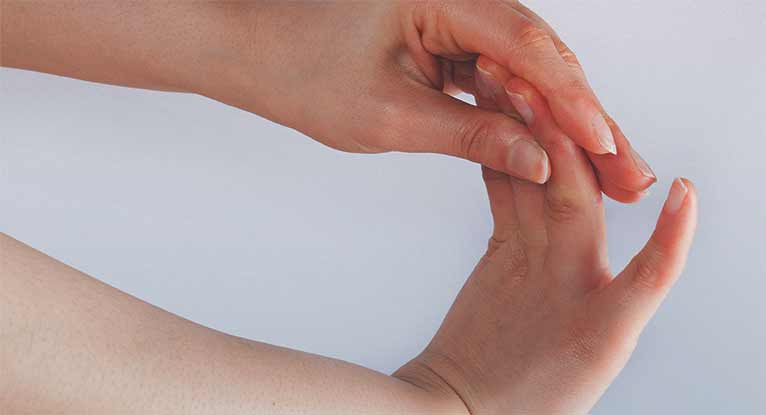Do you suffer from carpal tunnel syndrome? If so, you know how painful and debilitating it can be. This is a guide to all of the different carpal tunnel treatment options available to you. We will discuss the pros and cons of each treatment, as well as the cost. We hope that this information will help you make the best decision about which treatment is right for you.
Contents
What Is Carpal Tunnel?

Carpal tunnel is a common condition that can cause pain, numbness, and tingling in the hands and wrists. It occurs when the median nerve, which runs from your forearm to your palm through a narrow “tunnel” of ligaments and bones in your wrist, becomes compressed or irritated. The symptoms of carpal tunnel can range from mild to severe and may affect one or both hands.
Carpal tunnel has become increasingly common due to the rise in the number of people working with computers and smartphones, which can lead to repetitive motions that strain the wrists and cause inflammation. Other risk factors for carpal tunnel include diabetes, arthritis, obesity, pregnancy, and certain medical conditions.
Fortunately, there are a variety of treatments available for carpal tunnel to help ease the pain and other symptoms associated with it. In this guide, we’ll take a look at the various types of treatment available and how they can help you manage your condition. Keep reading to learn more about carpal tunnel treatments!
What Are The Treatment Options For Carpal Tunnel?

There are various treatment options for carpal tunnel. They are as follows:
Splinting
This is one of the most common treatments for carpal tunnel syndrome. A splint holds your wrist in a neutral position and helps reduce pressure on the median nerve. Splinting can be done during sleep or during activities that aggravate symptoms, like typing and scrolling on your phone.
Carpal tunnel splints are braces worn on the wrist to limit its range of motion and reduce pressure on the nerve. Depending on your doctor’s recommendations, you may be advised to wear a splint at night or during activities that put a strain on your wrist. This can provide much-needed relief from carpal tunnel symptoms like pain and numbness. Talk to your doctor about what type of splint is right for you and how long to wear it.
Non-Surgical Treatments
Non-surgical treatments may include physical therapy and steroid injections to reduce inflammation around the median nerve. You may also be prescribed medications such as nonsteroidal anti-inflammatory drugs (NSAIDs) or other pain relievers to help relieve discomfort caused by carpal tunnel syndrome.
Surgery
This may be recommended if your symptoms don’t improve with other treatments. It aims to reduce pressure on the median nerve by cutting through a ligament in your wrist (carpal tunnel release).
Alternative Treatment
Alternative treatments for carpal tunnel syndrome include acupuncture, massage, yoga, and stretching exercises.
Yoga
Yoga is an ancient practice that works to strengthen the muscles around your wrists and hands. This helps take pressure off of the nerve in the carpal tunnel, reducing symptoms of carpal tunnel syndrome. There are many poses that can help stretch and open up the area around your wrists, such as downward facing dog, cat/cow pose, and wrist stretches. Talk to a certified yoga instructor about poses that are beneficial for carpal tunnel syndrome, or look up online tutorials for more guidance. Remember to take it slow and be mindful of your body when doing these poses; if there is discomfort, stop immediately. Finding the right balance of intensity and rest for your practice can make all the difference in carpal tunnel treatment.
Acupuncture
It is an ancient Chinese practice that can reduce inflammation and relax muscles around your wrists, both of which are beneficial for carpal tunnel syndrome relief. It is performed by inserting needles into specific trigger points on the body to release tension and promote healing in the area. Studies have shown that acupuncture treatment is effective in reducing symptoms of carpal tunnel syndrome, relieving pain and restoring function. Talk to your doctor about finding an experienced acupuncturist in your area who can provide carpal tunnel relief through this ancient art.
Stretching exercises
In most cases, carpal tunnel treatment begins with stretching exercises. It is important to do these exercises regularly and for an extended period of time to ensure the best results. Stretching exercises can help improve mobility in your wrists, arms, and hands, reduce inflammation and alleviate tension along the median nerve, as well as strengthen the muscles in your forearms. Common stretching exercises include wrist flexion and extension, forearm pronation and supination, shoulder blade squeezes, and finger stretches.
It is important to discuss all of your treatment options with your doctor before making a decision. Your doctor can help you decide which treatment option is best for you and provide guidance on ways to reduce the risk of further complications and minimize pain. With the right combination of treatments, carpal tunnel syndrome can be managed effectively.
How Long Does Carpal Tunnel Take Time To Heal?
Carpal tunnel treatment can take a few weeks to several months depending on the severity of your condition and how well you respond to treatment. You may start seeing improvements shortly after beginning carpal tunnel treatments, including pain relief and improved mobility, however, recovery usually takes some time.
Depending on your individual situation, it is important for you to follow your doctor’s advice and take steps to prevent the problem from returning. This may include changes in how you use your hands and wrists, such as avoiding repetitive motions or taking breaks throughout the day.
However, it is important to remember that there are many different types of treatments and therapies available. Therefore, it is important to consult with a medical professional in order to develop a personalized plan of treatment tailored specifically to an individual’s needs.
Prevention Tips
There are various prevention tips:
1. Maintain a good posture when typing and using the mouse. Make sure your wrists are not bent in an awkward position.
2. Take frequent breaks while working. This will give your hands, arms, and wrists a chance to rest and relax.
3. Avoid any activities that put extra stress on your wrists such as lifting heavy objects.
4. Make sure you have a good ergonomic setup so that your wrists and arms remain in an optimal typing position while working.
5. Exercise regularly to maintain good overall muscle tone and strength, which can help reduce stress on your wrists and hands.
6. Avoid repetitive motions such as using the same mouse or keyboard for extended periods of time.
7. If you are experiencing symptoms, see a doctor to have your carpal tunnel syndrome evaluated and treated accordingly.
8. Wear a brace or splint when performing activities that involve repetitive motions with your hands and wrists. This can help reduce the strain on them.
Following these prevention tips can help reduce the strain on your wrists and hands, and can ultimately prevent carpal tunnel syndrome from occurring. However, if you do experience any symptoms or discomfort in your hands, wrists, arms, or fingers, see a doctor as soon as possible to have it evaluated and treated accordingly.
Conclusion
It may be concluded that carpal tunnel treatment can be effective in relieving the symptoms of carpal tunnel syndrome. In addition, lifestyle modifications such as taking frequent breaks throughout the day and avoiding activities that can increase strain on the wrists are also important components of carpal tunnel treatment. By utilizing these different approaches, individuals may be able to reduce or even eliminate their symptoms. With proper treatment and care, individuals suffering from carpal tunnel syndrome can return to living a normal life free of discomfort.
The information contained in this ultimate guide provides a comprehensive overview of carpal tunnel treatment and its various components. can be effective in relieving the symptoms of carpal tunnel syndrome. In addition, lifestyle modifications such as taking frequent breaks throughout the day before beginning any form of treatment or therapy. Doing so can help ensure that the right approach is taken for an individual’s specific needs, leading to improved results and a better quality of life. By taking these steps, individuals can reduce or eliminate their symptoms and get back to living their lives as they were meant to be lived.
Physical Therapy help patients recover from pain. If you’re experiencing Back pain, Shoulder pain, Knee pain, Neck pain, Elbow pain, Hip pain, or Arthritis pain, a physical therapist at MantraCare can help: Book a physiotherapy session.


